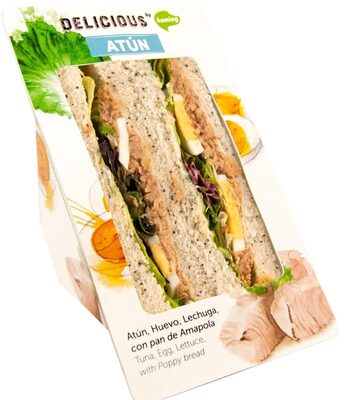Sandwich Atún Mediterráneo - Ñaming - 200 g.
This product page is not complete. You can help to complete it by editing it and adding more data from the photos we have, or by taking more photos using the app for Android or iPhone/iPad. Thank you!
×
Barcode: 8424058002755 (EAN / EAN-13)
Quantity: 200 g.
Packaging: Plastic
Brands: Ñaming
Categories: Sandwiches
Labels, certifications, awards: Nutriscore, Nutriscore Grade A
Origin of ingredients: es:Zaragoza
Manufacturing or processing places: Zaragoza
Traceability code: ES 26.01340/8 CE
Link to the product page on the official site of the producer: http://www.n-aming.es
Stores: Carrefour express
Countries where sold: Spain
Matching with your preferences
Environment
Packaging
Transportation
Report a problem
Data sources
Product added on by openfoodfacts-contributors
Last edit of product page on by foodless.
Product page also edited by alexfauquette, kiliweb, packbot, redspider, roboto-app, yuka.B5lbYoWJPOwiOcjJjq0K-BOUFbfcONReEyYToQ, yuka.C5lzLtrWM8UNH_aM74Io0mmgH-PAKtR7PnUmow, yuka.JKtmM8CqP-cnAMHX2KUR2hmLOf3QEdp6SXkwog, yuka.WHFFTEhLY2FtcVlTeXYwUjRndlQxWXBrMW8yd2JHTHNDckFQSWc9PQ, yuka.sY2b0xO6T85zoF3NwEKvlld7fMjikxb4DST5oXTR6u-eNLf1a-lYyJqrLKs, yuka.sY2b0xO6T85zoF3NwEKvlmp-bPbuixf8DhPmwkaO5offIo3KWt9ry7DLEao, yuka.sY2b0xO6T85zoF3NwEKvlnYXaeCHoBvFMQLTomi35IqlLbznMO9K-7CiEqs.








